ACUFO-1945-01-10-INGWILLER-1
The 415th Night Fighter Squadron (415th NFS) of the U.S. Army Air Forces was established in February 1943 and conducted patrols in the Mediterranean and north-west Europe combat zones during WWII.
In December 1944, and until the Germans lost Alsace, members of the 415th NFS made several reports of what they called “Foo-Fighters” in the Rhine valley, as recorded in a report for January 30, 1945, by the Tactical Air Command intelligence officer Fred Ringwald, who had himself been one of the first witnesses of these “balls of light”.
In this report, a case is recorded for the night of 14-15 January 1945 at 08:00 pm, saying that a large orange glow in the sky that was seemingly 5 feet in diameter was observed close to Ingwiller, at 6000 feet.
The report stated that in all cases where the pilot requested a confirmation by ground radar, he received a negative answer.
The case was cited in the UFO literature, wrongly located in Germany and with a misspelling of the original report; where the location was called “Ingweiller” instead of Ingwiller.
| Date: | January 10, 1945 |
|---|---|
| Time: | 08:00 p.m. |
| Duration: | ? |
| First known report date: | January 30, 1945 |
| Reporting delay: | Hours, 3 weeks. |
| Country: | France |
|---|---|
| State/Department: | Bas-Rhin |
| City or place: | Ingwiller |
| Number of alleged witnesses: | 1 or 2 |
|---|---|
| Number of known witnesses: | 1 or 2 |
| Number of named witnesses: | 0 |
| Reporting channel: | Military summary report. |
|---|---|
| Visibility conditions: | Night. |
| UFO observed: | Yes. |
| UFO arrival observed: | ? |
| UFO departure observed: | ? |
| UFO action: | |
| Witnesses action: | |
| Photographs: | No. |
| Sketch(s) by witness(es): | No. |
| Sketch(es) approved by witness(es): | No. |
| Witness(es) feelings: | ? |
| Witnesses interpretation: | ? |
| Sensors: |
[X] Visual:
[ ] Airborne radar: [ ] Directional ground radar: No. [ ] Height finder ground radar: No. [ ] Photo: [ ] Film/video: [ ] EM Effects: [ ] Failures: [ ] Damages: |
|---|---|
| Hynek: | NL |
| Armed / unarmed: | Armed, four 20 mm cannons and six 7.62 mm machine guns. |
| Reliability 1-3: | 3 |
| Strangeness 1-3: | 2 |
| ACUFO: | Possible German V-2 rocket. |
[Ref. usa2:] FRED B. RINGWALD, U.S. ARMY AIR FORCES:
The 415th Night Fighter Squadron of the U.S. Air force was formed in February 1943 and it carried out patrols in the Mediterranean and then North-west Europe during World War II.
In December 1945, members of the 415th made multiple reports of what they called “foo-fighters”, as recorded in a January 30, 1945 report to Tactical Air Command by intelligence officer Fred Ringwald.
Here are the parts of that report about the sighting in their case file:

|
1. In compliance with paragraph 3 of 1st Incl., the following extracts from the Sortie Reports of various pilots who have encountered the Night Phenomenon are submitted for your information.
[... other sightings ...]
Night of 14-15 January 1945 - “Observed a large orange glow in sky appear. 5 ft. in diameter in vicinity of Ingweiller [sic, “Ingwiller”] at 6000 ft. at 20:00 hours.”
[... other sightings ...]
2. In every case where pilot called CGI Central and asked if there was a Bogey A/C in the area he received a negative answer.
F.B. RINGWALD [Fred B. Ringwald, the unit's S-2 Intelligence Officer.]
Captain, [Illegible]
Intelligence Officer
Note: the report lists several other sightings, those have their own case files.
[Ref. bgd1:] BARRY GREENWOOD:
Barry Greenwood, in an article about the “Foo-Fighters” documents in the U.S. military archive, said:
A summary of incidents [reported by airmen of the U.S. Army Air Forces 415th Night Fighter Squadron] was prepared by Captain F. B. Ringwald, Intelligence Officer with Headquarters 12 of the Tactical Air Command to advise S-2 of the “Night Phenomenon” encountered by the pilots and dated January 30, 1945.
Barry Greenwood then cited 13 cases from Ringwald's report, including this one:
“Night of 14-15 January 1945 - “Observed a large orange glow in sky approx. 5 ft. in diameter in vicinity of Ingweiller at 6000 ft. at 20:00 hrs.”
Barry Greenwood commented about these reports:
It is noteworthy to point out that these pilots made a distinction between the usual flak bursts sent up by anti-aircraft fire and what they were seeing in these incidents. One might expect that due to technical advances during the war, eventually one side may develop a new sort of anti-aircraft weapon that could behave in an intelligent manner in pursuit of enemy planes. The problem with this here is that there are no known reports of “Foo Fighters” bringing down aircraft of either side. The objects that seemed to be “under perfect control at all times” didn't seem to do damage but merely accompany planes on their respective missions without interference.
To end the summary, Ringwald said that in each case where the pilot called GCI control to ask if “Bogey A/C” were in the area, he received a negative answer. It was also noted, perhaps more of interest to modern audiences, that these objects were called “Foofighters.” One word only, which should we call it? Chamberlin added his own written footnote for another sighting on February 28: "Returning, 45 miles East of Base (Loral Ochey) sighted foo fighters to rear starboard. Orange red in color. Turned to have a look and it disappeared. Near Luneville, SECRET north of Strasbourg. Lt. Buscio & Krasner RO.”
[Ref. dwn2:] DOMINIQUE WEINSTEIN:
At 20h00, a pilot of the 415th Night Fighter Squadron reported a large orange glow in the sky, approximately five feet in diameter at 6,000 feet altitude.
Sources: USAAF, Report from Captain F.B. Ringwald, Intelligence Officer, 415th Night Fighter Squadron, To AIC of S/A-2 XII Tactical Air Command, January 30, 1945, NARA / Strange Company, Keith Chester, 2007
(Ref. nip1:) "THE NICAP WEBSITE":
Jan. 14/15, 1945; Ingweiller [sic], Germany
A large orange glow in sky approx. 5 ft. in diameter. (Page 131 Ref.1)
The reference 1 is described at the end of the document as “Strange Company (2007), Keith Chester”.
[Ref. tai1:] "THINK ABOUT IT" WEBSITE:
Date: Jan. 14/15, 1945
Location: Ingweiller, Germany
Time:
Summary: A large orange glow in sky approx. 5 ft. in diameter.
Source:
The Bristol Type 156 “Beaufighter”, nicknamed “Beau”, was a British multi-role aircraft developed during WWI. It was originally conceived as a heavy fighter variant of the Bristol Beaufort torpedo bomber; it proved to be an effective night fighter, which came into service with the Royal Air Force (RAF) during the Battle of Britain.
Originally, armament consisted of four 20mm cannons and six 0.303-in machine-guns but many variants were built; for example, versions had the ability to additionally carry eight rocket projectiles, some had a Vickers 'K' gun, Beaufighter TF.Mk X was used for anti-shipping operations.
The Beaufighter Mk VIF was fitted with the Mark VIII radar.
Below: Beaufighter Mk VIF of the 415th Night Fighter Squadron.
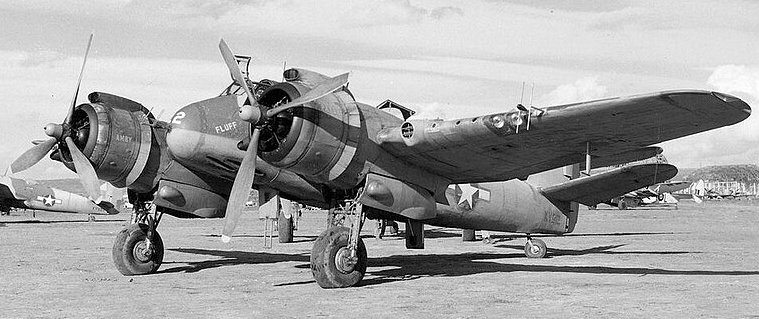
|
The Beaufighters served with the U.S. Army Air Forces until the end of the war, but most were replaced by the P-61 “Black Widow” beginning in December 1944.
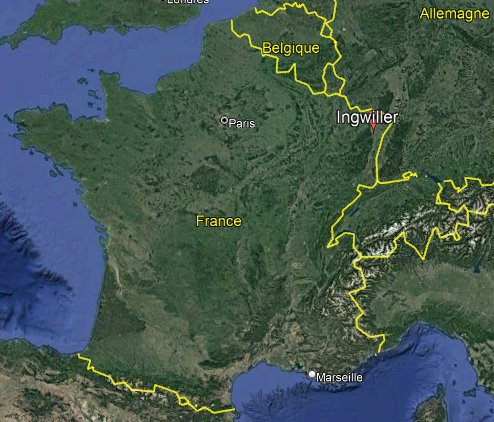
|
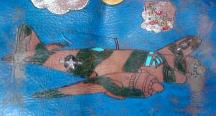
|
Above: Jacket badge of the US 415th Night Fighters Squadron, showing the British Bristol Beaufighter plane they used at that time.
Crews of the 415th Night Fighter Squadron of the U.S. Army Air Force reported their nocturnal observations of what they called “Foo Fighters” above the Rhine valley then occupied by the Germans, between November 1944 and April 1945, as their base was in Dijon and Ochey in France.
Their reports apparently ceased when the Germans lost Alsace.
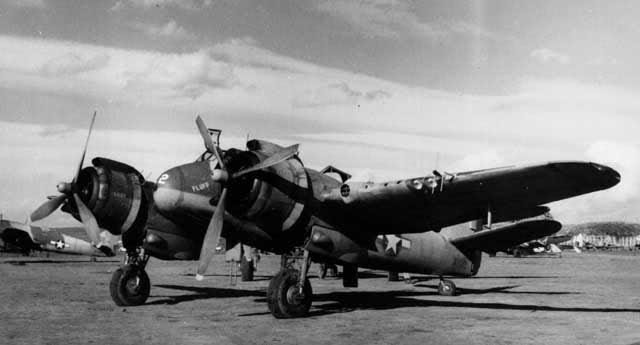
|
Above: a 415th NFS Bristol Beaufighter.
“Ingweiller, Germany” is an incorrect location. Ingwiller is a French village in the Bas-Rhin department, Alsace region.
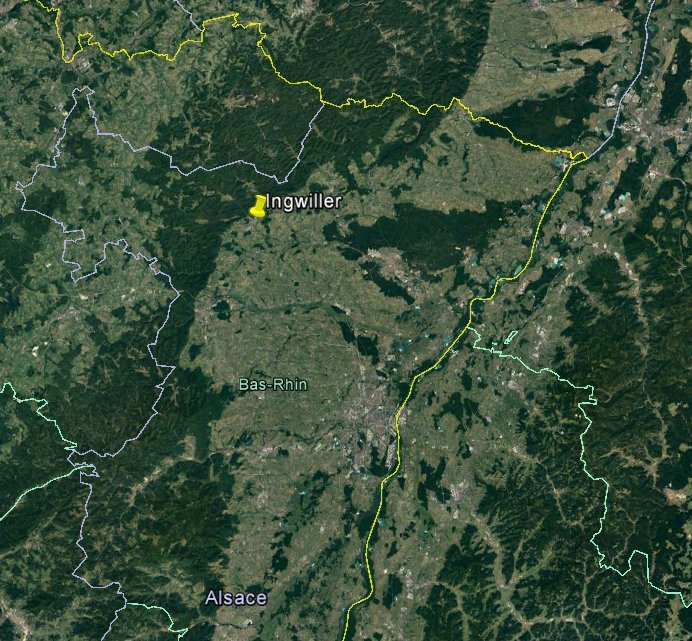
|
In Merzig, in the Saarland, 80 kilometers northeast of Ingwiller, there was a launch pad for V-2 rockets. This is the known launch site closest to the place of observation; but it is documented that the launches there ended in October 1944. However, it should be kept in mind that at that time the V-2 had logistics allowing them to be launched from anywhere.
The V-2 launches on January 10, 1945, were:
Jan. 10, (Times Unknown) - Batt. 1./836, Hachenburg, Hillscheid (Site 604), (4) rockets fired, (impacts unknown), (one failure).
Jan. 10, (Times Unknown) - Batt. 3./836, Hachenburg, Gehlert (Site 605), (6) rockets fired, (impacts unknown), (one failure)
Jan. 10, (00.21 hours) - Battery 444, Hœk van Holland, V-2 rocket fired, impacted Edmonton. Fell on allotment. Slight damage to property. 5 Persons injured. (*JP)
Jan. 10, (10.55 hours) - Batt. 1./485, Loosduinen (Site 19), V-2 rocket fired, impacted Great Totham, Essex. Moderate damage to farmhouse. 1 Person injured. (*JP)
Jan. 10, (11.14 hours) - Batt. 1./485, Loosduinen (Site 78), V-2 rocket fired, impacted Stoke Newington. 6 Persons seriously injured. Severe damage to one property. (*JP)
Jan. 10, (14.21 hours) - Batt. 1./485, Loosduinen (Site 78), V-2 rocket fired, impacted on farmland in Henlow, Bedfordshire. Slight damage. (*JP)
Jan. 10, (14.25 hours) - Batt. 1./485, Loosduinen (Site 19), V-2 rocket fired, impacted Broomfield, Essex. Fell in field. Slight damage to property. 3 Persons injured. (*JP)
Jan. 10, (17.16 hours) - Battery 444, Den Haag, Scheveningse Bosjes, N of Waterpartij (Site 47), V-2 rocket fired (failure). (*JP)
Source: www.v2rocket.com/start/deployment/timeline.html
Hachenburg is located 200 km north of Ingwiller, and on January 10, 1945, several rockets were fired there twice at unknown times. There is therefore the possibility that the observation could be explained by a V-2 launch.
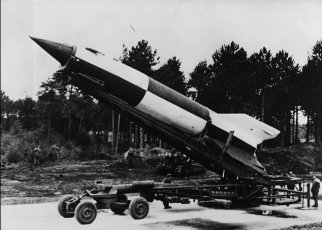
|
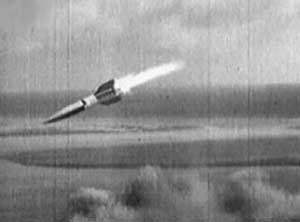
|
The description of the observation is obviously too meager to prove that the airmen saw a V-2 rocket; but it is also too meager to allow to discard this explanation.
Possible German V-2 rocket.
* = Source is available to me.
? = Source I am told about but could not get so far. Help needed.
| Main author: | Patrick Gross |
|---|---|
| Contributors: | None |
| Reviewers: | None |
| Editor: | Patrick Gross |
| Version: | Create/changed by: | Date: | Description: |
|---|---|---|---|
| 0.1 | Patrick Gross | April 13, 2024 | Creation, [usa2], [dwn2], [nip1], [tai1]. |
| 1.0 | Patrick Gross | April 13, 2024 | First published. |
| 1.1 | Patrick Gross | June 13, 2024 | Addition [bgd1]. |